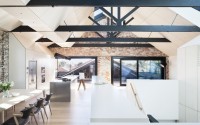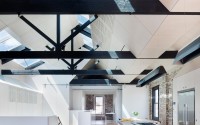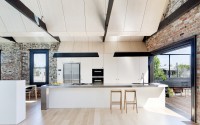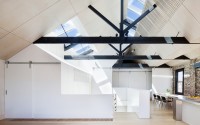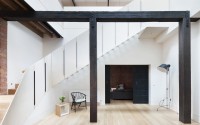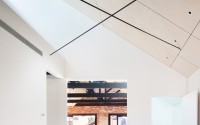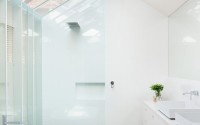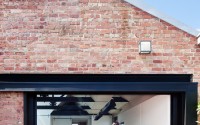Water Factory by Andrew Simpson Architects
Located in North Fitzroy, Australia, this former warehouse was redesigned in 2014 by Andrew Simpson Architects.










Description by Andrew Simpson Architects
This project engages with issues of extended family dwelling, spatial flexibility, and adaptive reuse.
The Water Factory involves the refurbishment and residential conversion of a late 19th century industrial warehouse building of individual heritage significance. Located in North Fitzroy the building previously contained businesses such as a jam factory, aerated water factory, advertising agency and engineering consultancy.
This was primarily an interior project: the footprint of the two storey building coincides with the site boundaries and the significant heritage constraints limited options for altering the external envelope of the building.
To address the need for multiple possibilities for extended family living, the design is conceived as a collection of houses contained within the broader envelope of the building. The plan is subdivided in two on the ground floor and internally connected to create two side-by-side dwellings which have separate main street entrances for different members of the family.
To draw light and ventilation into what is a poorly oriented and deep footprint, an extensive number of operable skylights were introduced on the north and south-facing roof pitches, and a large void connecting the ground and first floor was strategically positioned to also take advantage of this amenity. Bedroom, bathroom and laundry spaces are divided by a series of operable and sliding panels. What are conventionally regarded as cellular and isolated spaces within a house are imbued with a sense that they are provisional areas that can form part of the open plan or be used for more private purposes.
The ceiling geometry which intersects with the original warehouse roof trusses, varies and undulates along the cross-section of the building. It contains the electrical and mechanical services and in its gable pitches creates an abstract allusion of several houses being contained within the main volume.
Photography by Shannon McGrath
Visit Andrew Simpson Architects
- by Matt Watts